Nepali Wedding Dates 2024
- February 23, 2024
- Nepali
Nepal is a landlocked country known for its rich culture, diverse ethnic groups and is home to the world’s highest… Read More
Just like in India, people of Nepali nationalities have experienced diverse communities. There exist 80 diverse ethnic groups speaking several languages, yet the number predicted is 123.
Nepalis are known for their warmth and “guest equal God’ mentality, which makes them resonate with various religions and ideas of God. Understanding their culture and, most importantly, their wedding ceremonies will be interesting.
Nepali Wedding Rituals are the most lively celebration of any community, with vivid rituals and an understanding of their respective faith. Nepali weddings are a delight; their traditions, music, and culture are worth knowing and enjoying.
Nepalis are known for their ethos, warmth, and timeless traditions. The country’s long-followed customs have given their lives authenticity and organically fostered a sense of community. Nepali wedding rituals are deeply rooted in their cultural significance. Historically, these communities have been highly influenced by Hindu, Buddhist, and other religions.
The essence of Nepali weddings, despite all the modifications now, is deeply ingrained in their cultural heritage.
The communities of “the land of Gods” have deep faith in astrology entrenched in the intricacy of rich traditions and age-old customs.
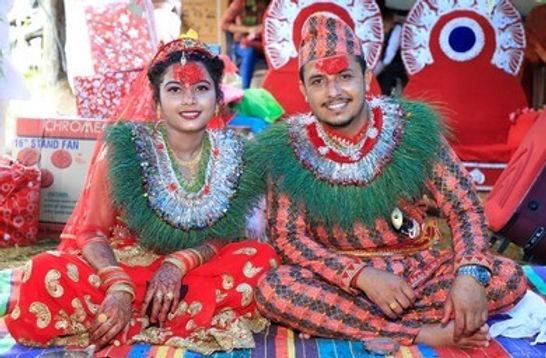
Check this also Hindu Wedding Rituals
Nepali culture has occasionally shown faith in astrology. They believe in auspicious timings and dates, which are an essential part of their wedding traditions.
Nepali weddings are thus scheduled on auspicious dates that will make the marriages favourable, happy, and long-lasting. These wedding dates are finalised based on the Lunar calendar in which Boishakh (April and May) and Kartik (October and November) hold a special significance. It is believed that these months are blessed with favourable planetary alignments.
Additionally, weddings are considered inauspicious to conduct in Rahu Kalam and Gulika Kalam.
Also, read about Nepali Wedding Dates in 2024.
The Kusha rings, also known as Kusha Kshyar, are prepared by the priest from the Kusha grass. (Kusha grass is a highly sacred type of grass believed to have religious significance.)
The bride and groom sit facing each other. The placement of the Kusha rings is in the third finger of the groom and bride by each other guided by Vedic chants and mantras.
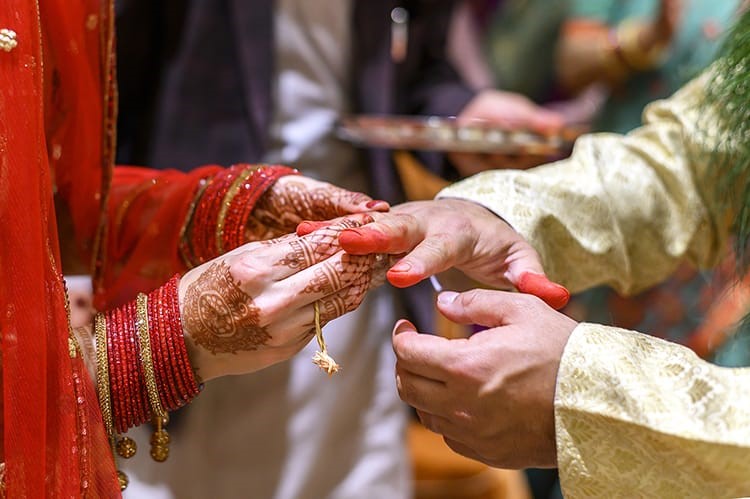
Vedic Hindu scriptures find it very auspicious and sacred. It is believed that this grass has protecting powers. The exchange of Kusha rings symbolises endless love and the unbreakable bond of the husband and wife.
Check this also Baniya /Agarwal wedding rituals
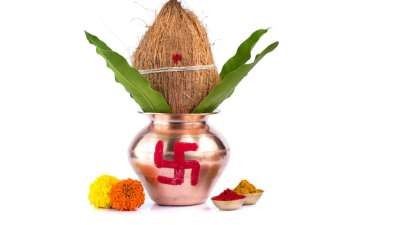
Hinduism has shown the significant importance of Kalash; it is considered an extremely pious and divine epitome of God.
A Kalasha or Purna Kalasha is a sacred brass, copper, silver, or clay vessel. Before the wedding ceremony, the Kalash is prepared and decorated with the pious Hindu symbols of Swastika, mango leaves, and Moli (the sacred red thread.) This sacred vessel contains Gangajal, grains, and other auspicious items.
The ceremony begins at the beginning of Indian wedding rituals during the Ganesh Pooja. The Kalash ceremony signifies spiritual awakening and purity in marriage.
Check this also Christian Wedding Rituals
This auspicious ceremony of Nepali weddings profoundly signifies the calling of the divine energies to bless the couple.
The Diyo ceremony represents light, positivity, unison, and the removal of obstacles from marriage. The diya or lamp is lighted under the chanting of mantras to make it more pure and divine.
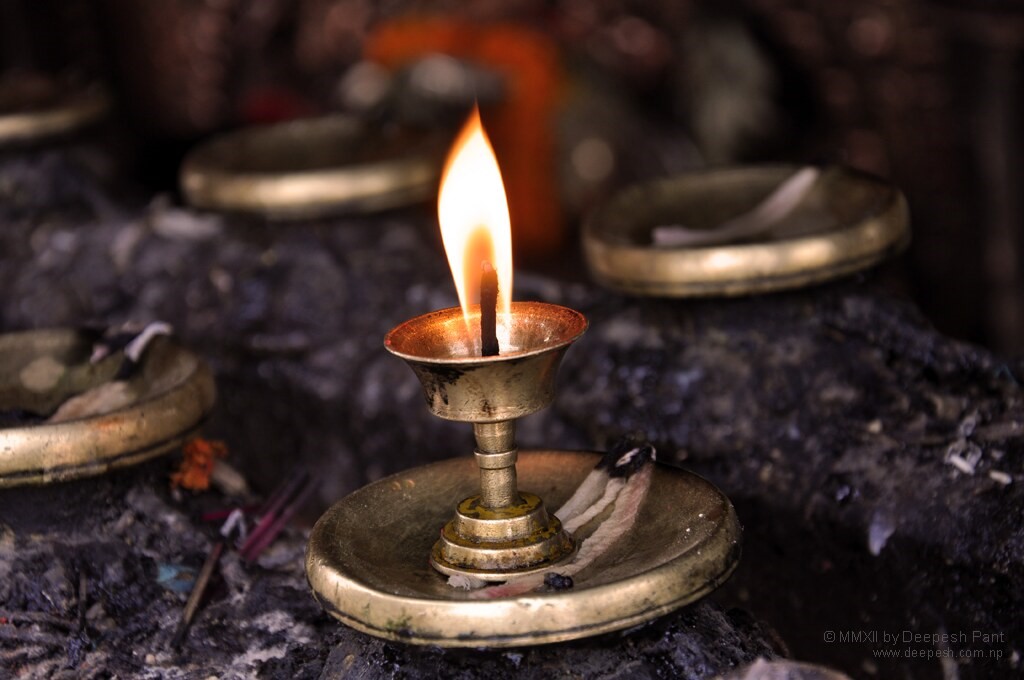
Gauna, or the circling of the groom, is a prominent ritual of Nepali wedding ceremonies. This ritual holds a very symbolic and emotionally deep significance, showing the love and unison of the bride and groom.

Generally, during this ceremony, the bride circles around the groom: three or seven with a garland or sacred thread. While circling, the bride silently promises and prays for the groom.
Gauna’s ceremony symbolises the bride’s official acceptance to the groom as her husband, protector and supporter. In some Nepali communities, this tradition happens during the Saptapadi or the seven vows.
Check this also Jain Wedding Rituals
Particularly among the Newar community ( communities majorly residing in the Kathmandu region of Nepal), Dubo ko Mala is a sacred and prominent ceremony in Nepali weddings.
This ritual carries the essence of nature. The garlands are made of Dubo grass, which Lord Vishnu admires as per Hindu mythos. This grass is woven with intricacy forming garlands, the intertwining of the grass resonates with the idea of locking the bride and groom’s lives together. Dubo mala is associated with fertility, purity, prosperity and mutual respect.
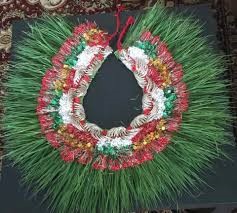
The bride and groom then exchange the Dubo Mala, showing acceptance towards each other in the presence of kin and companions.
Check this also Catholic Wedding Rituals
Hindu weddings have always glorified the idea of sindoor and mangalsutra. They have been considered pious and auspicious and have symbolised the purity of the husband and wife’s bond.
Sindoor is applied to the bride by the groom, who observes her transition to being a married lady. The bride allows the groom to apply kumkum, sindoor, or red-coloured vermilion, showing her acceptance of the marriage and towards her husband.
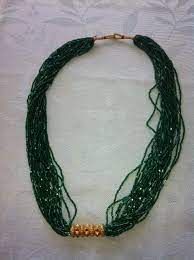
Mangalsutra, sutra in Sanskrit, refers to the thread, and mangal is goodwill. The groom ties the mangal sutra to the bride’s neck, officially upgrading her marital status. The mangal sutra has black beads woven in golden threads; the black beads renounce the bride from all bad influences and negativity.
Both ceremonies are significant in Nepali marriages; these moments are highly sentimental and full of love.
The acquaintances really enjoyed it, and the ambience turned its vibrancy to a happy mode, radiating love and unison for the couple.
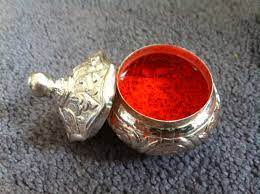
Check this also Odia wedding rituals.
This ceremony includes the exchange of a unique neckpiece called a Tilhari. These necklaces are crafted by a craftsman who is knowledgeable about the craft of Tilhari. It comprises red beads, precious stones, and other symbolic stuff.
The groom presents Tilhari to the wife, and the wife accepts it with love, representing mutual respect and companionship.
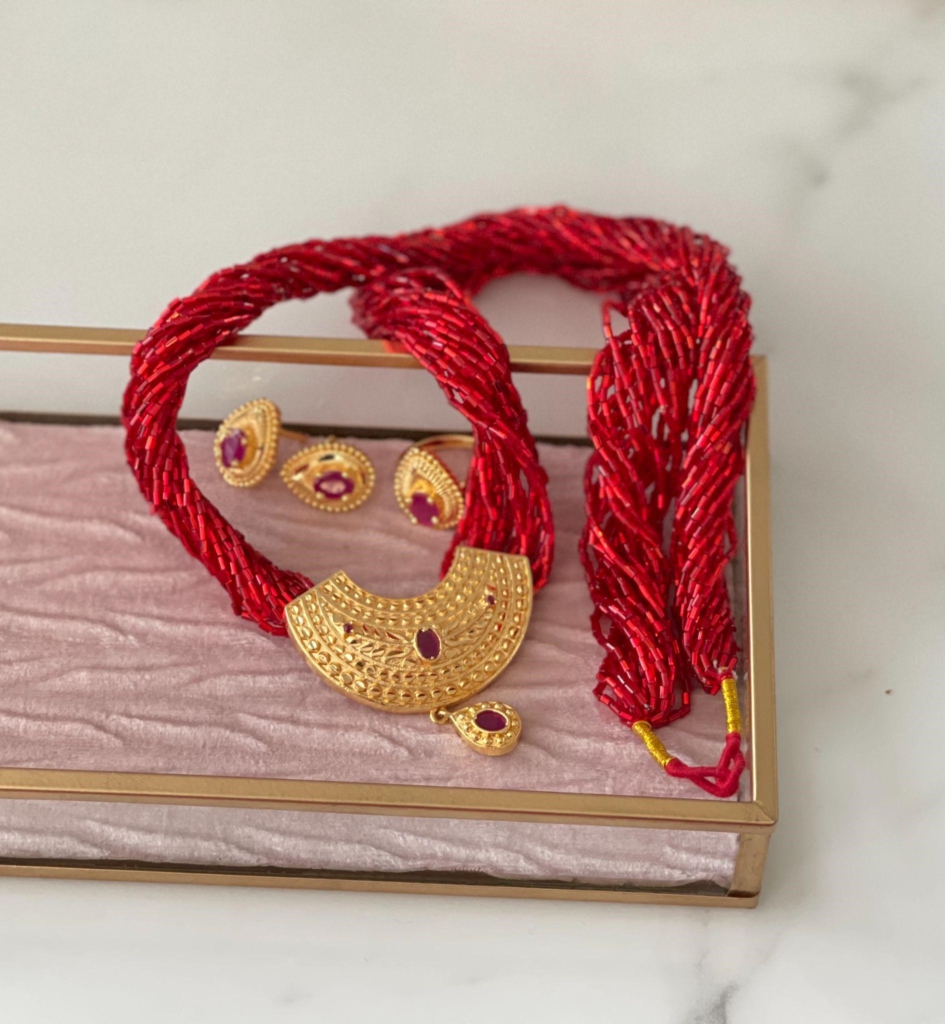
The wedding feast is a civil ceremony, usually just a celebration of the couple’s unison. Post-marriage, the beloved ones join the couple for a feast with authentic Nepali delicacies and shower blessings for their married life. The wedding feasts are usually the most wholesome site.
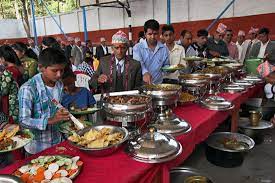
Bidaai remarks an emotional farewell of the bride. The bride leaves her maternal home and shifts with her husband, starting her new journey as a married woman.
The bride’s family blesses the couple and allows the bride to move with her husband happily.
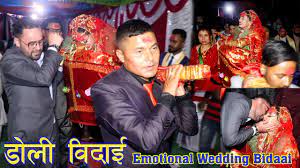
Check this also Royal Rajput Wedding Rituals
The traditional attire varies from one religious belief to another, but the brides in Nepali weddings predominantly prefer wearing a saree or lehenga. This is the personal choice of a bride, though, yet anciently sarees of shades of red and maroon were preferred. Today, contemporary designs and other influences can also be seen. A dupatta, gold jewellery, and henna are also a part of the bridal traditional attire.
The groom’s attire is Daura Suruwal, where Daura is a long-sleeved shirt, and and Suruwal is trousers with a waistcoat called Bandi. The groom wears a traditional Topi over the dress, followed by Pathuka, a scarf, and some jewellery pieces.
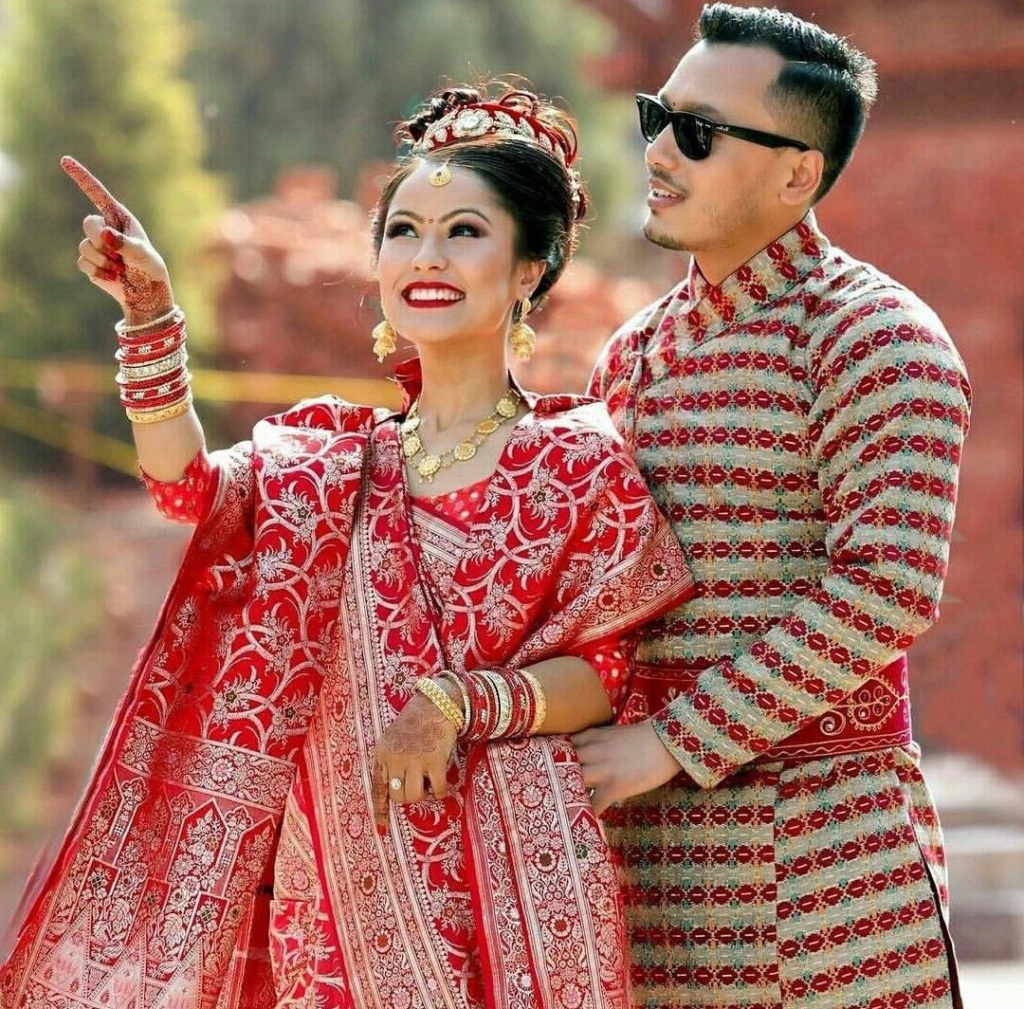
Check this also Sindhi Wedding Rituals
Every community serves their best cuisine at the wedding ceremony. Traditional cuisines also stand with their significance. Let us learn about some of the Traditional Nepali delicacies.
Dal Bhat: Dal bhat is the staple of Nepali cuisine, which consists of rice and lentils. It can be enjoyed with vegetables or pickles.
Momo: Momo are dumplings with veg or non-veg fillings based on your preferences. It is the most preferred appetiser in Nepal.
Sel Roti: A crispy rice bread, sel roti is a divine experience
Kheer: Kheer is a creamy milk delicacy filled with nuts and saffron. It is a legitimate delight to the taste buds.
Bara: Baras are lentil pancakes that contain flavours and goodness.
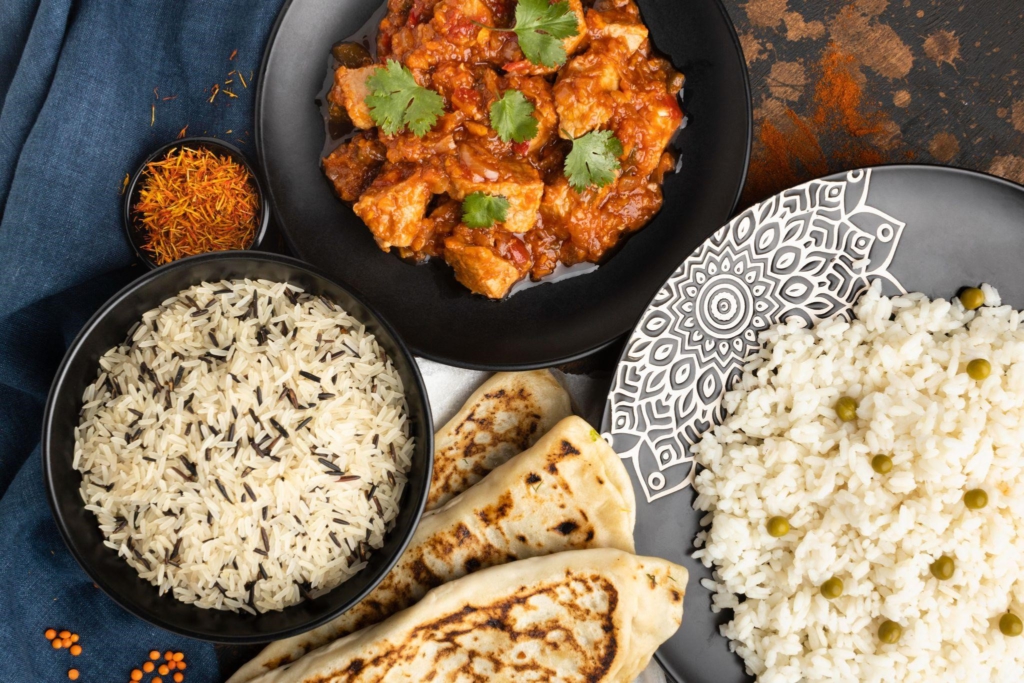
Check this also Marwari wedding Rituals
Weddings have seen a copious adulteration of modern and progressive thoughts. After the advancements in technology and other aspects of society, the beauty of Nepali traditions remains untouched.
Fortunately, Nepali weddings have secured their rich costumes and timeless culture to adulterate much. From the Dubo ko mala to the natural influence of the cuisine and the Vedic chanting, the rituals are rightfully preserved and celebrated. This is probably the essence of the Nepali communities and Nepali wedding rituals.
Also read about Nepali Wedding Dates 2024.